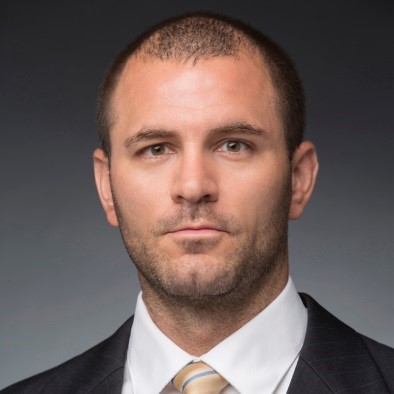ARTICLE SUMMARY:
The articles that most engaged Market Pathways readers in 2023.
In no particular order, our editorial staff’s top features from 2023, based on article views on MyStrategist.com.
CDRH Seeks More Speed and Consistency in Premarket “Redesign”
 A newly formed working group within FDA’s device center has been tasked with making device premarket review processes more agile to improve efficiency and predictability by 2025.
A newly formed working group within FDA’s device center has been tasked with making device premarket review processes more agile to improve efficiency and predictability by 2025.
Consultants Corner: Justin Eggleton on Using the Evidence That’s Out There
 FDA has increasingly made it clear that real-world evidence is a welcome component of premarket submissions. In this edition of Consultants Corner, Justin Eggleton, from MCRA, addresses common sources of skepticism and explains how industry can embrace the RWE opportunities.
FDA has increasingly made it clear that real-world evidence is a welcome component of premarket submissions. In this edition of Consultants Corner, Justin Eggleton, from MCRA, addresses common sources of skepticism and explains how industry can embrace the RWE opportunities.
Can We Talk? Breaking Down Barriers to Notified Body-Manufacturer Dialogue
 Notified bodies say they want to be more responsive to questions from companies planning MDR or IVDR submissions, but restrictions against consulting and a lack of clarity from EU authorities have been standing in the way of so-called structured dialogue. One of the largest notified bodies recently rolled out such a program, but how far it, and offerings from other bodies, can go toward providing the advice that companies desire remains to be seen.
Notified bodies say they want to be more responsive to questions from companies planning MDR or IVDR submissions, but restrictions against consulting and a lack of clarity from EU authorities have been standing in the way of so-called structured dialogue. One of the largest notified bodies recently rolled out such a program, but how far it, and offerings from other bodies, can go toward providing the advice that companies desire remains to be seen.
FDA Hires Medtech Deals Expert to Run TAP Program
Ed Shenkan, a veteran medical device deals and investments consultant, recently joined FDA’s device center as associate director of the TPLC Advisory Program. Shenkan will oversee day-to-day operations for the TAP pilot, which CDRH has billed as an innovative early-interaction approach allowing firms to gauge regulatory, reimbursement, and other market risks early in a development project.
LimFlow: Building Reimbursement Into a Start-Up Strategy
 Start-ups can no longer postpone developing a reimbursement path and hope an eventual acquirer takes on that responsibility. LimFlow is an example of how a company prioritized reimbursement from the outset in developing its pioneering peripheral vascular technology and is now reaping the benefits of that approach.
Start-ups can no longer postpone developing a reimbursement path and hope an eventual acquirer takes on that responsibility. LimFlow is an example of how a company prioritized reimbursement from the outset in developing its pioneering peripheral vascular technology and is now reaping the benefits of that approach.
The Human Factor Factors: Is FDA Casting Too Wide a Net for Usability Data?
 Some industry observers are raising concerns that a recent draft guidance from FDA would unnecessarily ramp up the number of devices subject to comprehensive human factors/usability evaluations.
Some industry observers are raising concerns that a recent draft guidance from FDA would unnecessarily ramp up the number of devices subject to comprehensive human factors/usability evaluations.
10 Takeaways on TCET: Medicare’s Latest Medtech Innovation Proposal
 CMS unveiled its Transitional Coverage for Emerging Technologies proposal last week—the agency’s second go-round at trying to streamline Medicare coverage of innovative new devices. Here’s Market Pathways’ initial analysis of the plan, with 10 key takeaways.
CMS unveiled its Transitional Coverage for Emerging Technologies proposal last week—the agency’s second go-round at trying to streamline Medicare coverage of innovative new devices. Here’s Market Pathways’ initial analysis of the plan, with 10 key takeaways.
Market Pathways Scorecard: FDA Review Edition
 In this installment of our monthly infographic, we look at PMA and 510(k) trends data, 2017-present.
In this installment of our monthly infographic, we look at PMA and 510(k) trends data, 2017-present.
The Connection Between Innovation and Health Policy: Stanford Biodesign Looks to Build That Bridge
 On the heels of adding a policy module to its Biodesign program, Stanford has also created a fellowship focused on medtech regulatory and reimbursement issues. We speak with health policy expert Kavita Patel, who is poised to play a senior role in the new program.
On the heels of adding a policy module to its Biodesign program, Stanford has also created a fellowship focused on medtech regulatory and reimbursement issues. We speak with health policy expert Kavita Patel, who is poised to play a senior role in the new program.
Creating a Reimbursement Unicorn: How Edwards Changed the Paradigm for Transcatheter Valves
 Gaining reimbursement for established technologies is hard enough, but solving the coding, coverage, and payment puzzle for a pioneering product area raises the degree of difficulty to a new level. Dirksen Lehman, who heads Edwards Lifesciences’ public affairs organization, including global health economics and reimbursement, takes us through the company’s strategy to break new ground in transcatheter valves using an approach that continues to drive innovation in this growing space.
Gaining reimbursement for established technologies is hard enough, but solving the coding, coverage, and payment puzzle for a pioneering product area raises the degree of difficulty to a new level. Dirksen Lehman, who heads Edwards Lifesciences’ public affairs organization, including global health economics and reimbursement, takes us through the company’s strategy to break new ground in transcatheter valves using an approach that continues to drive innovation in this growing space.
Medtech in China: An Island of Relative Calm in a Sea of Volatility
 While US-China relations remain volatile, the Chinese medtech market, although evolving both in terms of advancing product development and shifting investment patterns, is seeing lower barriers to entry emerging for western companies, particularly those with innovative technologies. Two China medtech experts, Ari Silverman and Olivier d’Arros, talk about the changes taking place in the Chinese market and how they expect it to progress in the face of continuing geopolitical tensions.
While US-China relations remain volatile, the Chinese medtech market, although evolving both in terms of advancing product development and shifting investment patterns, is seeing lower barriers to entry emerging for western companies, particularly those with innovative technologies. Two China medtech experts, Ari Silverman and Olivier d’Arros, talk about the changes taking place in the Chinese market and how they expect it to progress in the face of continuing geopolitical tensions.
Never the Twain Shall Meet? Medicare CED Gathering Precedes TCET Rule
 CMS convened its MEDCAC advisory committee in February to consider updates to its Coverage With Evidence Development (CED) program. The efforts appear to be feeding into the agency’s work to construct a streamlined (TCET) coverage path new for medtech, but industry groups want to keep the CED and TCET streams separate.
CMS convened its MEDCAC advisory committee in February to consider updates to its Coverage With Evidence Development (CED) program. The efforts appear to be feeding into the agency’s work to construct a streamlined (TCET) coverage path new for medtech, but industry groups want to keep the CED and TCET streams separate.
Docs of the Month: EU Gets Down to Details on New MDR Transition Plans
 In this month’s spotlight from Pathways’ Document Depot: EU organizations, including the European Commission and TEAM-NB, rolled out resources and arguments engaging with the recently extended Medical Device Regulation transition.
In this month’s spotlight from Pathways’ Document Depot: EU organizations, including the European Commission and TEAM-NB, rolled out resources and arguments engaging with the recently extended Medical Device Regulation transition.
How CEOs and Investors Are Adapting to MDR
 The recent extensions of MDR timelines have once again forced companies to recalculate their strategies for operating under the new regulations. Here a panel of CEOs and investors at our recent Dublin Innovation Summit share their perspectives on operating in this ever-changing environment.
The recent extensions of MDR timelines have once again forced companies to recalculate their strategies for operating under the new regulations. Here a panel of CEOs and investors at our recent Dublin Innovation Summit share their perspectives on operating in this ever-changing environment.
